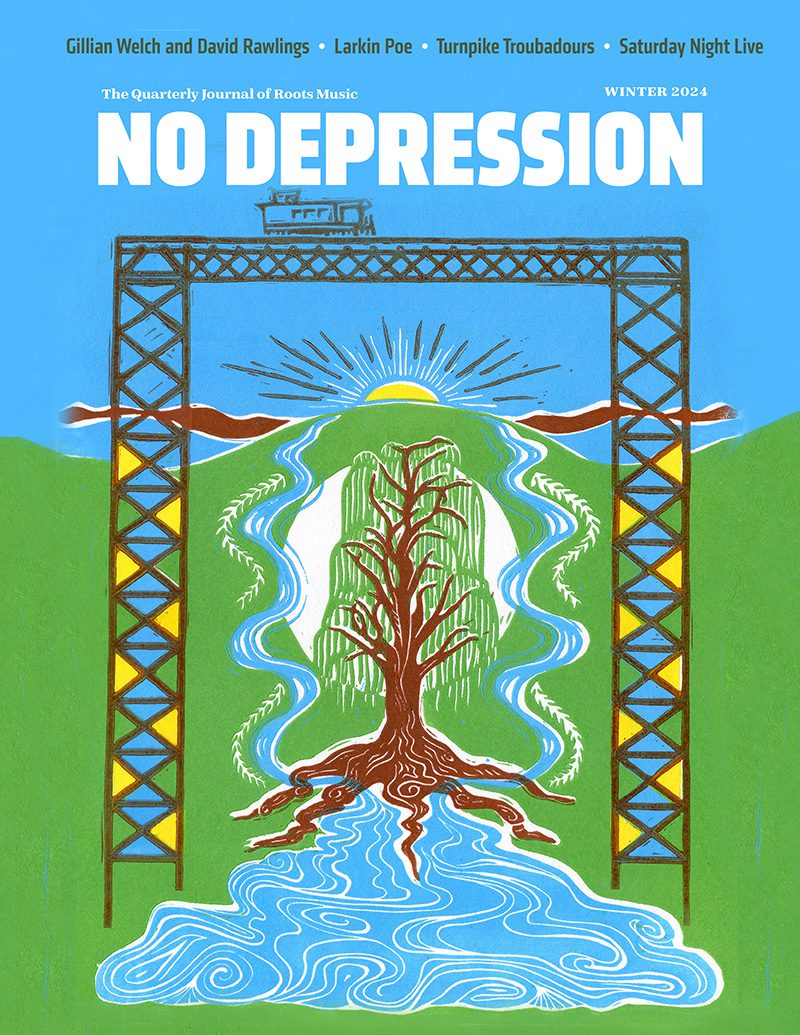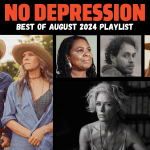My wife and I came to bluegrass music a little late, but I suppose many people do. Because Irene and I come to music from different backgrounds, we needed a place to meet, a style to share in common.
I grew up on classical music, ’50s and ’60s popular jazz, and folk music. Big bands, country music, and high school marching band provided Irene’s formative musical experiences. We listened to lots of music and arrived at Merlefest in 2003, thinking it was a bluegrass festival, only to discover what Doc Watson called “bluegrass +.” While attending Merlefest each year for a decade, we also focused ourselves more toward attending other bluegrass festivals and concerts, eventually also joining the International Bluegrass Music Association (IBMA) and attending its annual meetings. Bluegrass – an invented rather than organic musical form, drawn from country, folk, old English ballads, and gospel music – became the place where we met musically. It appeals to both the head and the heart, is filled with controversies worth exploring, and has led me here, to my first column at No Depression.
Bluegrass – a unique and sensational musical genre distinct from generic country music – is perhaps the only musical form whose story begins with a specific date. Bill Monroe, known now as “the Father of Bluegrass,” is a good example of the Southern diaspora that stretched to the industrial Midwest during the Depression and through the war-aided recovery. He spent some years touring bars, radio stations, square dances, and other small venues with his brother Charlie, seeking their own sound for country music. He had formed a band and later became a member of the Grand Ole Opry, in 1939; but it wasn’t until December 8, 1945, when Lester Flatt and Earl Scruggs stepped on the stage with Monroe, that the sound jelled and The Blue Grass Boys – referring to Monroe’s home state of Kentucky, the bluegrass state – became the pioneers of bluegrass music. Bill Monroe is a member of The Country Music Hall of Fame, Bluegrass Hall of Fame, and the Rock & Roll Hall of Fame – quite an accomplishment.
It seems like bluegrass is at once quaint and old-fashioned, but it also tends toward the cutting edge and requiring virtuoso musicians. Bluegrass in the winter at festivals or concerts may look like the refuge of old people who can barely move more than to tap their toes. On the other hand, at a four-day bluegrass festival during the summer, anywhere across the country, you can see young families on blankets listening to wonderful music, feeling secure as their children dance, play, run around, and sometimes pick up a stick to air-play an instrument. Bluegrass is multigenerational, appealing across age groups while inviting bankers and bikers alike to listen and enjoy. It’s a genre in which significant numbers of fans play acoustic instruments and jam, from hot young pickers to old codgers like me, playing tunes pulled from old country and gospel.
So, in the coming weeks and months, in this space, I’ll be writing about the joys of bluegrass, some of the controversies endemic to the genre, the bluegrass community, and whatever else bluegrass-related strikes my fancy. I’m eager to share our experiences and promise to never paper over the problems inherent to the genre. I hope you’ll come along for the ride.




